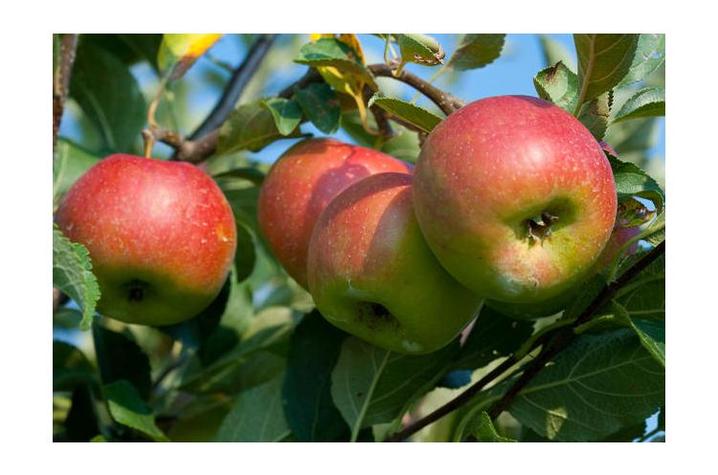UK Researchers Studying Ways to Detect Worms in Apples

Worms poking out of apples may be a cute back-to-school theme, but they are not a welcome sight in orchards. Researchers at the University of Kentucky are studying noninvasive ways to improve detection methods for the codling moth in apples.
Codling moths are the most devastating insect pests of apples. Each spring, adult moths lay their eggs on or around developing apples. When the eggs hatch, the larva, or worm, tunnels into the apple, where they feed on the fruit and develop for three to five weeks. Then they exit the fruit to pupate in a nearby location over the winter.
As the world’s largest exporter of apples, U.S. apple growers can experience huge profit losses from a codling moth infestation. Many countries have strict laws related to insects and will not accept codling moth-infected apples. If an inspector finds one infested apple in a shipment, it can reduce producers’ profits by more than 50%. In recent years, incidences of codling moth findings in U.S. apples have increased by 276%.
A team led by Akinbode Adedeji, assistant professor in UK’s College of Agriculture, Food and Environment (CAFE), plans to develop a way to quickly and noninvasively identify moth-infected apples. Their project is funded through a nearly $475,000 grant from the U.S. Department of Agriculture’s National Institute of Food and Agriculture.
“With no current method to rapidly scan every apple, U.S. producers are vulnerable to having their shipments rejected or greatly devalued,” said Adedeji, a food process engineer in UK’s Department of Biosystems and Agricultural Engineering. “Our goal is to help the multibillion dollar U.S. apple industry remain globally competitive and sustainable.”
Currently, inspectors at apple processing plants randomly determine a select number of apples from each shipment to inspect for moths. If the inspector finds a potential spot where a moth may have entered, they physically open the apple to see if the insect is inside.
The UK research team, which includes CAFE entomologist Raul Villanueva and electrical engineer Kevin Donohue from the College of Engineering, will combine two noninvasive sensing methods, acoustic emission and hyperspectral imaging, to greatly increase the rapid detection of insect-infected apples.
“This will increase detection accuracy, assurance and effectiveness without physically cutting the apple in instances where the inspectors cannot visually see an insect damage point on the apple,” Adedeji said.
To do this, they will determine the acoustic emission, or sound, an infected apple emits and if the sound is impacted by the storage conditions of the apples. They will use that knowledge combined with hyperspectral imaging data, which uses remote sensing to detect problems in the fruit, to teach machines how to quickly identify an infected apple. Plant operators can channel infected apples to a lesser premium use or discard them before they enter the supply chain.
Not only will the research help U.S. growers but it can also help U.S. inspectors rapidly scan apples coming into the U.S. from other countries to ensure that those apples are also insect free.
Credits
Katie Pratt (Ag Communications)

